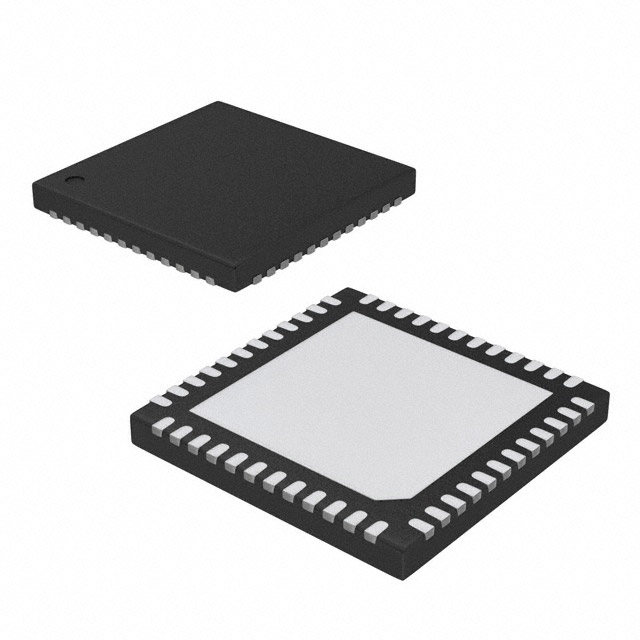Lihat spesifikasi untuk detail produk.

AD9525BCPZ
Overview
Category
AD9525BCPZ belongs to the category of integrated circuits (ICs).
Use
It is commonly used as a clock generator and distributor in various electronic systems.
Characteristics
- High precision and low jitter performance.
- Wide frequency range.
- Flexible configuration options.
- Compact package size.
Package
AD9525BCPZ is available in a small form factor package, typically a 48-lead LFCSP (LQFP) package.
Essence
The essence of AD9525BCPZ lies in its ability to generate and distribute accurate clock signals within electronic systems.
Packaging/Quantity
AD9525BCPZ is typically sold in reels or trays, with a quantity of 250 units per reel/tray.
Specifications and Parameters
- Frequency Range: 1 MHz to 2.4 GHz
- Supply Voltage: 3.3 V
- Output Types: LVPECL, LVDS, CMOS
- Operating Temperature Range: -40°C to +85°C
Pin Configuration
For a detailed and complete pin configuration diagram of AD9525BCPZ, please refer to the datasheet.
Functional Characteristics
AD9525BCPZ offers the following functional characteristics:
- Multiple clock outputs with programmable frequencies and phases.
- Integrated PLL (Phase-Locked Loop) for precise frequency synthesis.
- Clock distribution with low skew and jitter.
- Support for external reference clocks.
Advantages and Disadvantages
Advantages
- High precision and low jitter performance ensure accurate timing in electronic systems.
- Wide frequency range allows for versatile applications.
- Flexible configuration options provide customization possibilities.
- Compact package size saves board space.
Disadvantages
- Limited output types may not be suitable for all applications.
- Requires external reference clock for operation.
Applicable Range of Products
AD9525BCPZ is suitable for use in various electronic systems that require precise clock generation and distribution, such as telecommunications equipment, data centers, and test and measurement instruments.
Working Principles
The working principle of AD9525BCPZ involves generating a stable clock signal using an integrated PLL. This clock signal is then distributed to multiple outputs with low skew and jitter, ensuring accurate timing across the system.
Detailed Application Field Plans
AD9525BCPZ can be applied in the following fields:
- Telecommunications: Providing synchronized clock signals for network equipment.
- Data Centers: Ensuring precise timing for server clusters and storage systems.
- Test and Measurement Instruments: Generating accurate clock references for measurement devices.
- Broadcast Systems: Distributing synchronized clocks for audio/video processing.
- Industrial Automation: Synchronizing control systems and sensors in manufacturing processes.
Detailed Alternative Models
Some alternative models to AD9525BCPZ include:
- AD9520BCPZ
- AD9522BCPZ
- AD9523BCPZ
- AD9524BCPZ
For a comprehensive list of alternative models, please refer to the datasheet.
5 Common Technical Questions and Answers
Q: What is the maximum output frequency of AD9525BCPZ? A: The maximum output frequency is 2.4 GHz.
Q: Can AD9525BCPZ operate with a different supply voltage? A: No, it requires a supply voltage of 3.3 V.
Q: Does AD9525BCPZ support differential output? A: Yes, it supports LVPECL and LVDS differential outputs.
Q: Can I synchronize AD9525BCPZ with an external reference clock? A: Yes, it has provisions for external reference clock input.
Q: What is the operating temperature range of AD9525BCPZ? A: It can operate within a temperature range of -40°C to +85°C.
This encyclopedia entry provides an overview of AD9525BCPZ, including its category, use, characteristics, package, essence, packaging/quantity, specifications and parameters, pin configuration, functional characteristics, advantages and disadvantages, applicable range of products, working principles, detailed application field plans, alternative models, and common technical questions and answers.

